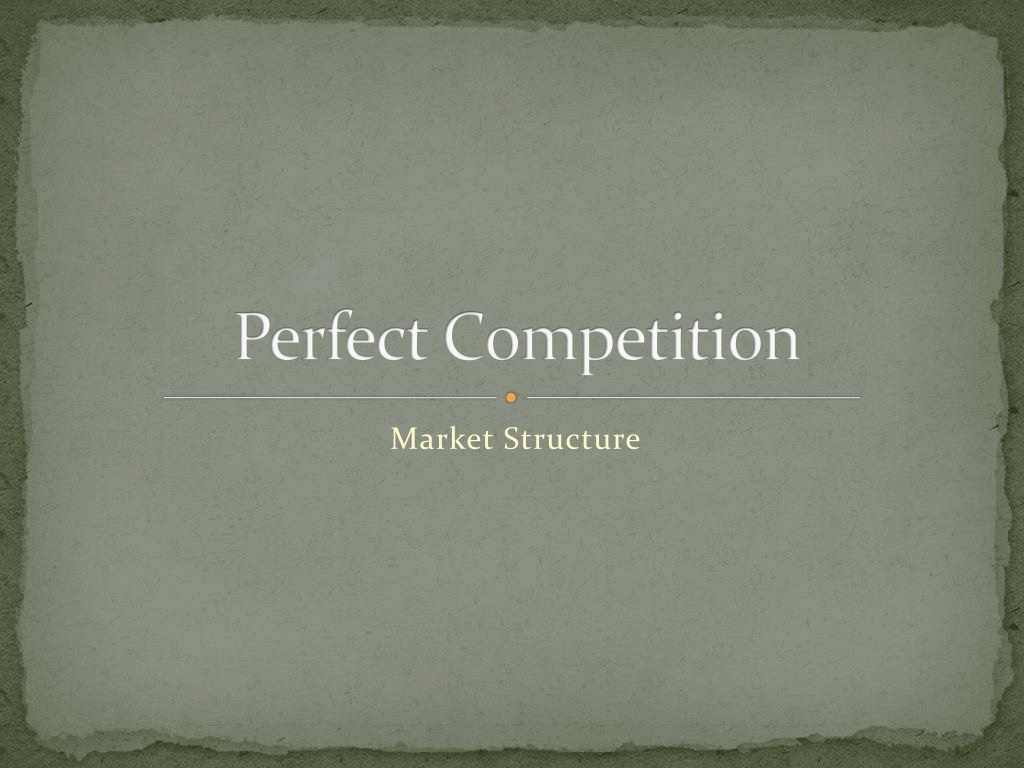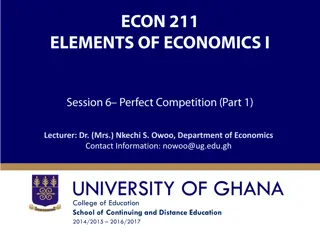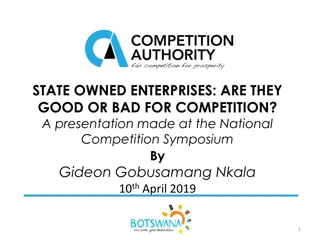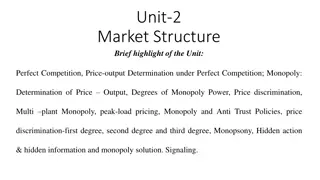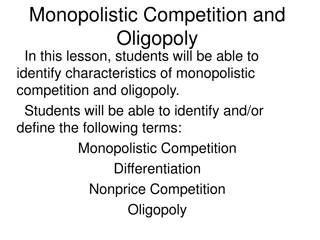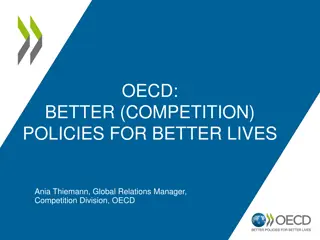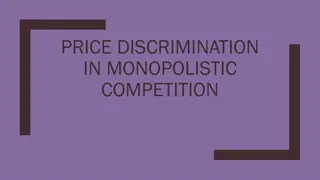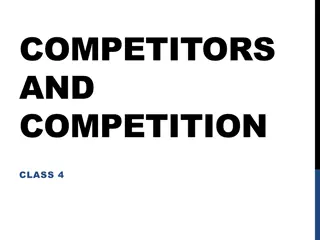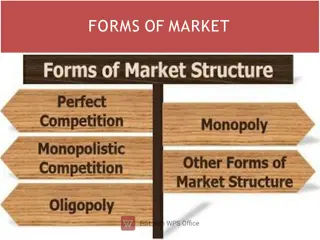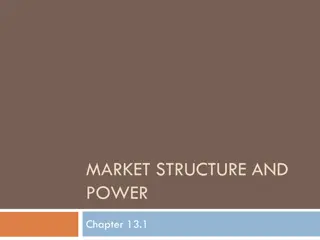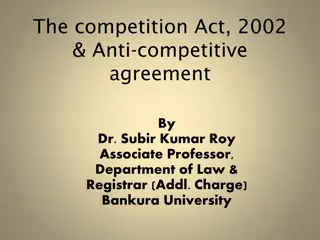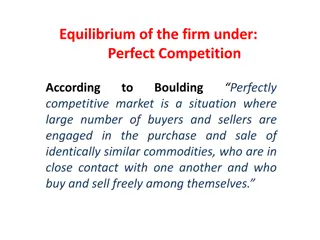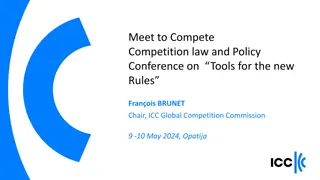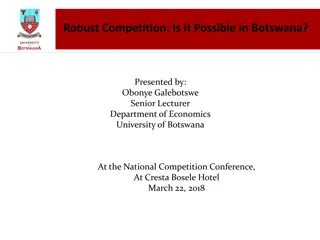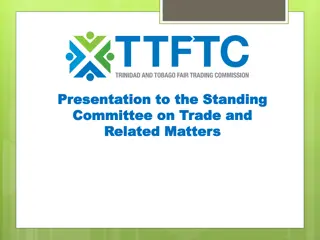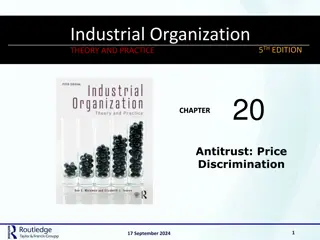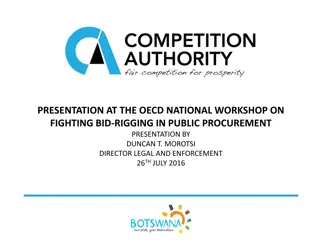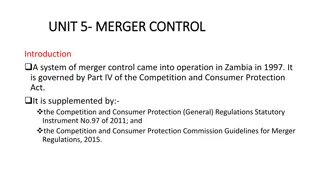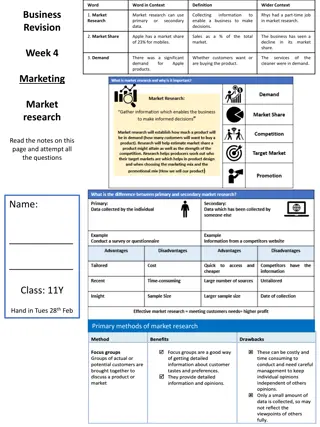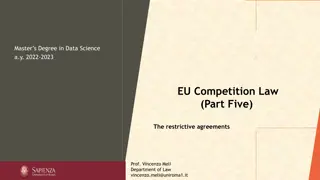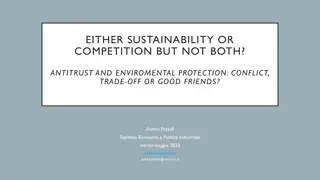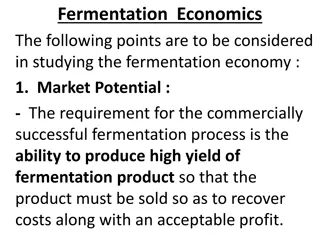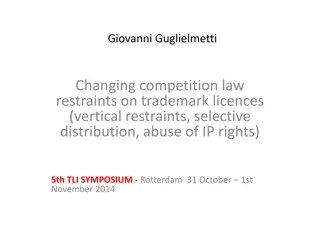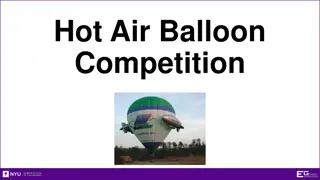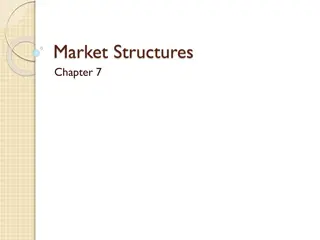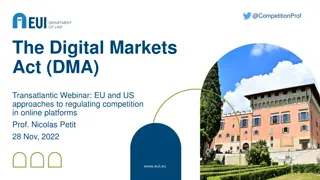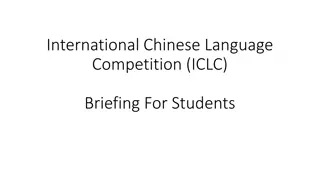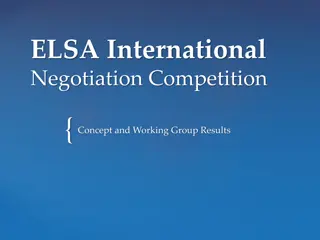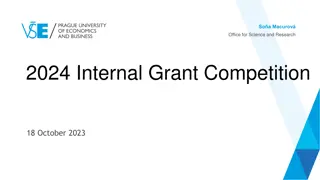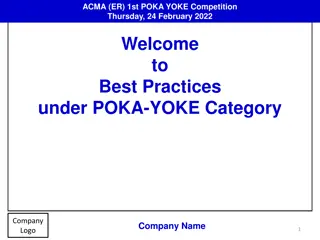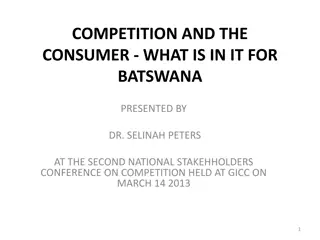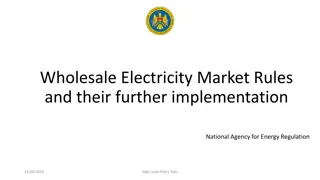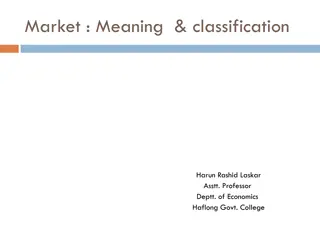Understanding the Perfect Competition Market Structure
Perfect competition is a market structure characterized by free entry and exit, a large number of buyers and sellers, homogeneous products, and firms aiming to maximize profits. In the short run, firms are price takers, unable to influence market prices. Transitioning to the long run, all factors of production can change, and new firms entering can drive prices down. While perfect competition has advantages like lower prices for consumers and efficiency, disadvantages include lack of variety and high competition leading to small market shares.
Download Presentation

Please find below an Image/Link to download the presentation.
The content on the website is provided AS IS for your information and personal use only. It may not be sold, licensed, or shared on other websites without obtaining consent from the author. Download presentation by click this link. If you encounter any issues during the download, it is possible that the publisher has removed the file from their server.
E N D
Presentation Transcript
Perfect Competition Market Structure
Characteristics No barriers to entry Firms can enter and leave the industry as and when they chose. A large number of buyers and sellers Each of which controls too little market share to be able to influence the market price. Homogenous products All firms sell identical products, making competitive advertising pointless and also meaning there is no brand loyalty. Perfectly elastic supply of Factors of Production The cost per unit of production remains the same. All firms aim to maximise Profits This happens when MC = MR
Short Run Because there is freedom of entry, and all goods are homogenous each firm is too small to influence the market price. If one firm charged more than the other firms, it would go out of business . If it charged less all firms would lower their price to match it. So Basically Therefore each firm is a Price Taker: they have no choice but to charge the same as everyone else.
Transition form Short Run to Long Run In the short run at least one factor of production is fixed In the Long Run all of the factors of production have changed Due to perfect knowledge of Price levels and No barriers to entry there are no profits earned in the long run. The arrival of new firms causes the Industry supply curve to shift to the right, forcing the price down.
Advantages of Perfect Competition The Consumer can buy the good for the lowest possible price that still allows the seller to remain in business, and therefore the consumer is not exploited. There is no waste of resources, such as on persuasive and competitive advertising. Efficiency is encouraged, since anyone who cannot produce at the lowest point on the AC curve goes out of business.
Disadvantages of Perfect Competition Goods are Homogenous, so consumers don t get any variety. Firms are constantly only one step away for going out of business. This may discourage entrepreneurship. Each firm has only a small market share, and so may not benefit from economics of scale. As a result, AC may be higher than if there were fewer larger firms.
Exam Questions 2007, Section B, Question 2 (a) (i) A firm operating under conditions of Perfect Competition is a price taker . Explain the concept of being a price taker . (6 marks) (ii) Explain, with the aid of a labelled diagram, the equilibrium position of a firm in short run perfect competition. (19 marks)
Answers (i) Being a price take means that the firm has too little market share to influence the market price, and must charge the price that the market sets. If it charges more, it sells nothing. If it charges less all other firms lower their price to match it. (ii) In the SR,the perfectly competitive firm faces the following:
A U- shaped Ac curve with the MC curve cutting it upward at its lowest point. Flat AR and MR CURVES, since it s a price taker. It maximises profit at MC = MR (circled). The profit on each unit sold is AR AC. When this is multiplied by Q, it tells you the supernormal profit earned. In the SR, the firm makes supernormal profit.
2007, Section B, Question 2 (b) With the aid of a labelled diagram(s), explain the impact which the entry of new firms would have on the market and on the equilibrium position of this firm (25 marks) Answer
In the LR, new firms enter the industry because: There are no barriers to entry. They went to take some of the supernormal profit that was earned in the SR. Since there is perfect knowledge, they know about this supernormal profit. Their entry cause the market supply curve to shift to the right. This drives down the market price from P1 to P2. Since each firm is a price taker , it must now charge P2. The firm still maximises profits at MC = MR. Any firms that don t go out of the business will be forced to charge a price that is at the lowest point on the AC curve. Therefore, since AR = AC for each unit sold, the firm makes only normal profit in the LR.
http://schmidtomics.blogspot.com/2010_01_01_arc hive.html www.davidmcwilliams.ie/2012/01/30/punk- economics www.economist.com By Savannah Moody
